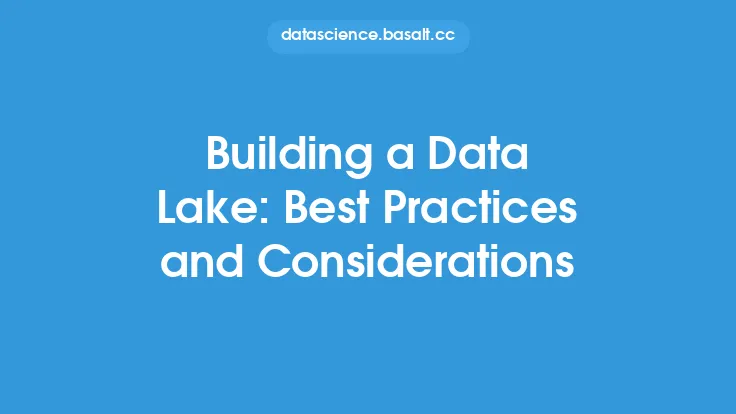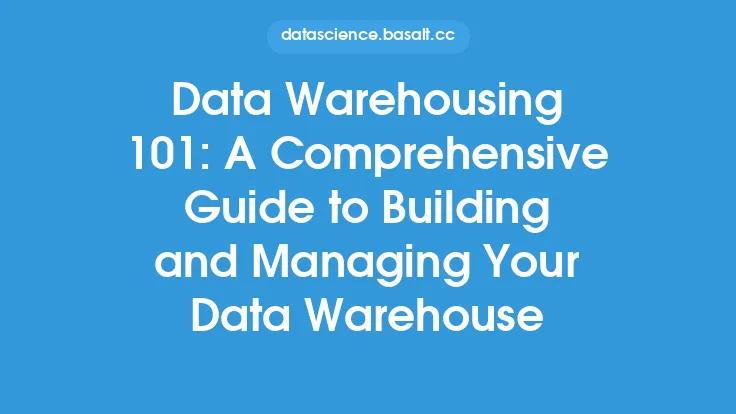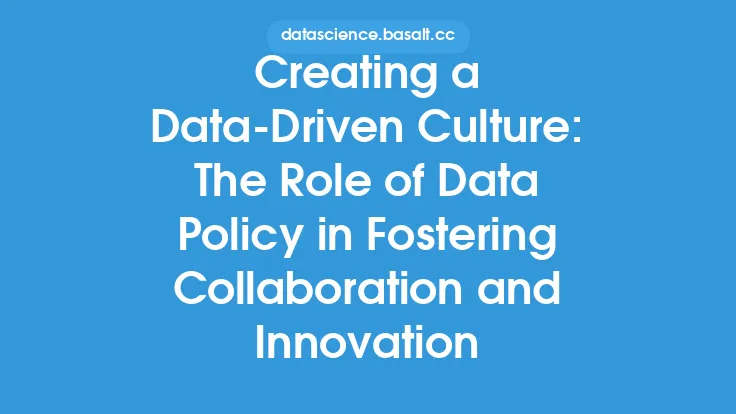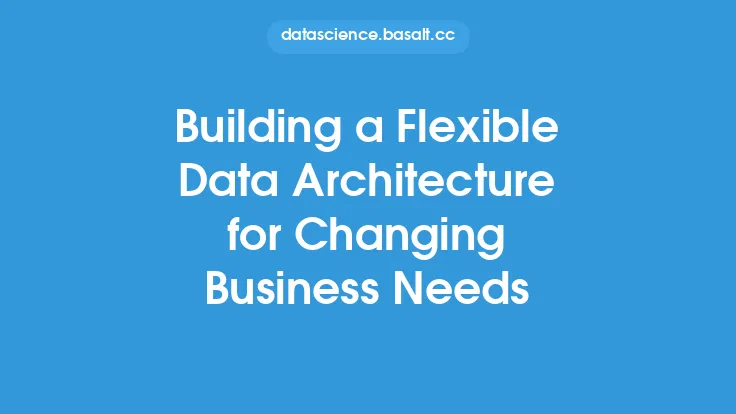Building a secure data environment is a critical aspect of data engineering, as it ensures the confidentiality, integrity, and availability of sensitive information. A secure data environment is essential for organizations to protect their data from unauthorized access, theft, or damage. In this article, we will discuss the principles and guidelines for building a secure data environment, focusing on the fundamental concepts and best practices that are essential for data security engineering.
Principles of a Secure Data Environment
A secure data environment is based on several key principles, including confidentiality, integrity, and availability. Confidentiality ensures that sensitive information is only accessible to authorized personnel, while integrity ensures that data is accurate and not modified without authorization. Availability ensures that data is accessible when needed, and that systems are resilient to disruptions. These principles are often referred to as the CIA triad, and are the foundation of a secure data environment.
Data Classification and Categorization
Data classification and categorization are critical components of a secure data environment. Data classification involves categorizing data based on its sensitivity and importance, while data categorization involves grouping data into categories based on its type and purpose. This helps to ensure that sensitive data is handled and protected accordingly, and that access controls are implemented to restrict access to authorized personnel. Data classification and categorization also help to identify potential security risks and vulnerabilities, and to implement controls to mitigate these risks.
Access Control and Authentication
Access control and authentication are essential components of a secure data environment. Access control involves restricting access to sensitive data and systems to authorized personnel, while authentication involves verifying the identity of users and systems. This can be achieved through various mechanisms, including passwords, biometric authentication, and multi-factor authentication. Access control and authentication help to prevent unauthorized access to sensitive data, and to ensure that only authorized personnel can access and modify data.
Network Security
Network security is a critical component of a secure data environment. Network security involves protecting the network infrastructure and data in transit from unauthorized access, theft, or damage. This can be achieved through various mechanisms, including firewalls, intrusion detection and prevention systems, and encryption. Network security also involves implementing secure protocols for data transmission, such as HTTPS and SFTP, and ensuring that network devices and systems are configured securely.
Data Storage and Management
Data storage and management are essential components of a secure data environment. Data storage involves storing sensitive data in a secure and controlled environment, while data management involves ensuring that data is accurate, complete, and up-to-date. This can be achieved through various mechanisms, including data backup and recovery, data archiving, and data retention. Data storage and management also involve implementing secure protocols for data access and modification, and ensuring that data is handled and protected in accordance with organizational policies and procedures.
Incident Response and Disaster Recovery
Incident response and disaster recovery are critical components of a secure data environment. Incident response involves responding to security incidents, such as data breaches or system compromises, in a timely and effective manner. Disaster recovery involves recovering data and systems in the event of a disaster, such as a natural disaster or system failure. This can be achieved through various mechanisms, including incident response plans, disaster recovery plans, and business continuity plans. Incident response and disaster recovery help to minimize the impact of security incidents and disasters, and to ensure that data and systems are available when needed.
Security Monitoring and Auditing
Security monitoring and auditing are essential components of a secure data environment. Security monitoring involves monitoring systems and data for security threats and vulnerabilities, while auditing involves reviewing and evaluating security controls and procedures. This can be achieved through various mechanisms, including security information and event management (SIEM) systems, vulnerability scanning, and penetration testing. Security monitoring and auditing help to identify potential security risks and vulnerabilities, and to implement controls to mitigate these risks.
Training and Awareness
Training and awareness are critical components of a secure data environment. Training involves educating personnel on security policies and procedures, while awareness involves raising awareness of security risks and vulnerabilities. This can be achieved through various mechanisms, including security awareness training, phishing simulations, and security workshops. Training and awareness help to ensure that personnel understand the importance of security, and that they are equipped to handle security incidents and threats.
Continuous Improvement
Continuous improvement is an essential component of a secure data environment. Continuous improvement involves continuously reviewing and evaluating security controls and procedures, and implementing changes and updates as needed. This can be achieved through various mechanisms, including security assessments, risk assessments, and vulnerability scanning. Continuous improvement helps to ensure that security controls and procedures are effective and up-to-date, and that the secure data environment is aligned with organizational goals and objectives.
In conclusion, building a secure data environment is a critical aspect of data engineering, and requires a comprehensive approach that includes principles, guidelines, and best practices. By following the principles and guidelines outlined in this article, organizations can ensure the confidentiality, integrity, and availability of sensitive information, and protect their data from unauthorized access, theft, or damage. A secure data environment is essential for organizations to maintain trust with their customers, partners, and stakeholders, and to comply with regulatory requirements and industry standards.





